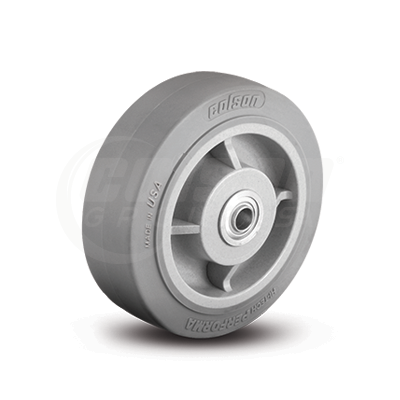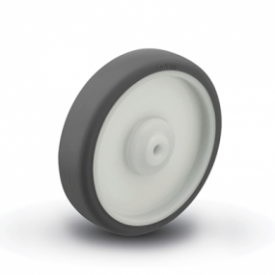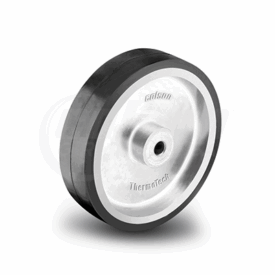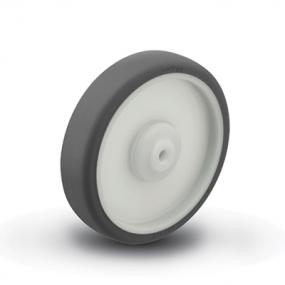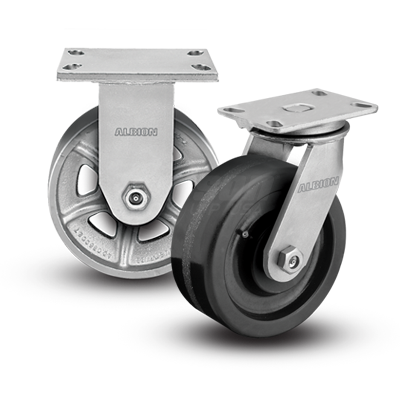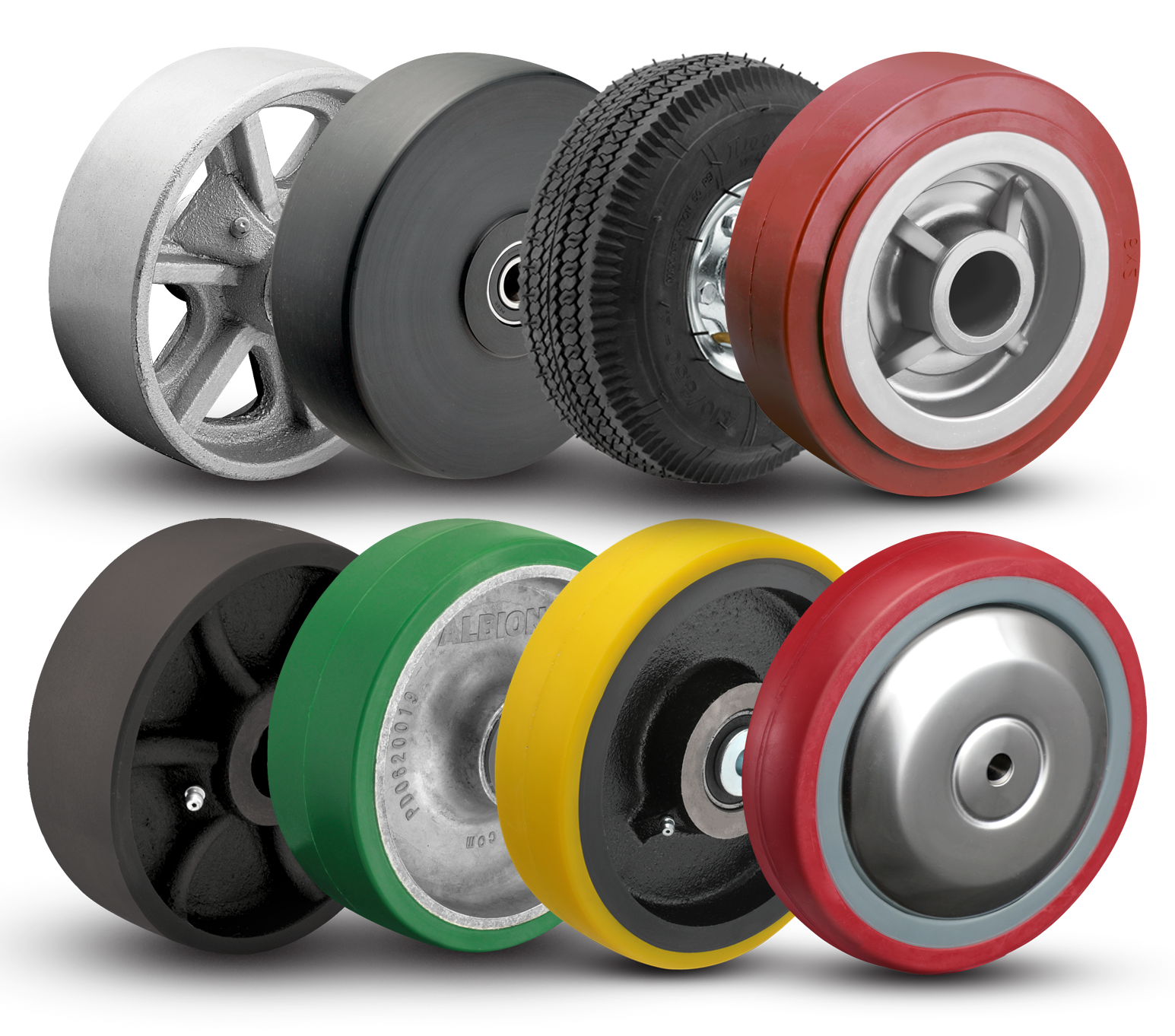Standard temperatures are no issue for most casters, but high heat (above 250°F) and extreme cold (below -45°F) can flatten, chip, flat spot, and warp wheels that aren’t up to the extreme temperature task. We have wheels that can thrive in the fire or withstand a flash freeze. But as you shop for the right wheel for the job, make sure to double check that your entire caster rig and lubricant are also built for extreme temps.
| Wheel Type | Temperature Range |
| Performa Rubber® | -45°F – +180°F |
| Moldon Nylon | -45°F – +180°F |
| Polyurethane HI-TECH Wheels™ | -45°F – +180°F |
| Polyurethane (Round Tread) | -45°F – +180°F |
| Triumph™ | -45°F – +180°F |
| Polyolefin | -45°F – +180°F |
| Phenolic | -45°F – +180°F |
| Moldon Rubber | -45°F – +160°F |
| Moldon Polyurethane | -45°F – +180°F |
| Cast Iron | -45°F – +500°F |
| Forged Steel | -45°F – +180°F |
| V-Groove | -45°F – +180°F |
| Thermo | -70°F – +525°F |
| ThermoTech | -45°F – +525°F |
| Endura® | -40°F – +230°F |
| Maxim® | -45°F – +350°F |
| Coming Soon – Bakery Heat Wave | Flash Freeze – +475°F or 525°F Intermittent |
Frequently Asked Questions
In extreme heat above 180°F, casters, bearings, and wheels can flatted, flat spot, or warp. This can lead to caster and wheel failure, which may result in injury. Manufacturers, automotive industries, and food service use heat treating methods or ovens that can expose casters, bearings, and wheels to these high temps.
When exposed to extremely cold temps -45°F or lower, casters, their bearings, and their wheels may become brittle and breakable. This can cause them to fail on the job if you’re not using the right caster wheel setup for your application. The food service industry and pharmaceuticals commonly use flash freezing, which can create these exceptionally cold environments.
Yes, Each caster is pre-lubricated with ‘Colson 45’ multi-temp grease, which works in both hot and cold environments.
All caster bearings need to be lubricated with a high quality multi-purpose grease that has good extreme pressure and anti-wear characteristics, as well as withstands temperature range that fits the application requirements.
Wheel and swivel bearings last longer if lubricated regularly.
Some lube applied to friction points on the wheel hub, washer and leg surfaces of straight roller bearing systems reduces drag and improves reliability.
Normal conditions may warrant lubrication every six months, but once a month may be necessary in extreme applications, such as corrosive or exceptionally dirty environments.
Cart washings may necessitate lubrication after each wash.
